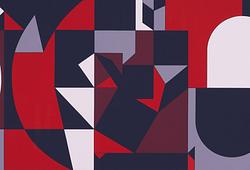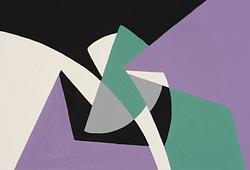Ragnar Sandberg
"Baderskorna/Flickor i vattnet"
Signed RS and dated -35. Canvas 35 x 43 cm.
Provenance
Art Gallery Gunnar Trägårdh, Gothenburg.
Conrad M. Pineus collection, Gothenburg.
Private collection.
Exhibitions
Konsthallen, Gothenburg, Group exhibition, 1936, cat. no. 87.
Lidköping Art Association, 14 Gothenburg, 1936, cat. no. 69.
Art Gallery Gunnar Trägårdh, "Göteborg Artists", 1936, cat. no. 10.
National Federation for Fine Arts, "Three Painters".
Liljevalchs Art Hall, Stockholm, "Ragnar Sandberg", 26 October 2002 - 6 January 2003.
Gothenburg Museum of Art, "Ragnar Sandberg", 8 February - 21 April 2003.
Literature
Carl Nordenfalk, "Katalog över Conrad M. Pineus Konstsamling", 1940, listed and illustrated p. 118 as no. 72.
More information
Ragnar Sandberg studied at Valand School of Fine Arts but hesitated for a long time in choosing between writing and painting. After a couple of years away from painting, he decided in 1929 to pursue an artistic career after all. During the 1930s, he worked with colour as a starting point and constantly sought new combinations. Sandberg did not follow any given formulas but experimented with various stylistic means. His painting fluctuated between a powerful colour expressionism and pale pastel tones with a lot of white in the colour, which gave him a unique position among the so-called Gothenburg Colourists, with whom he is often associated. Under the influence of Bonnard, a subdued colourism emerged strongly in Sandberg's painting during the 1930s. The pastose application was replaced by a rhythmic one, where a restrained lyrical palette took precedence.
In the mid-1930s, Ragnar Sandberg painted series of bathers, cyclists, and football players. The colour scheme is both light and strong, which enhances the sense of movement. In "Girls in the Water," he has captured beach life on the west coast with its bathers. The vibrant contrasts contribute to the feeling that can arise on a warm day at the beach in the middle of summer. For Sandberg, what was important was not to capture the image itself but the entire impression the motif made on the artist. Sandberg himself explained: "Seeing risks being locked into, for example, the image of a seaside. There is so much that never comes through. The wind. The saltiness. The sound of the sea. I wanted to get at that by dissolving the representational."











































